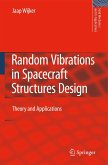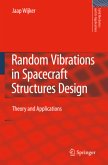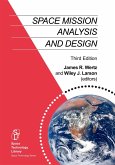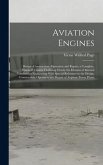1 Design requirements for aerospace structural materials.- 1.1 Introduction.- 1.2 Properties that affect structural efficiency ab initio.- 1.3 Properties affecting cost of ownership.- 1.4 Cost-effective design.- 1.5 Concluding remarks.- References.- 2 Aluminium alloys: physical metallurgy, processing andproperties.- 2.1 Introduction.- 2.2 Aluminium alloys: processing and properties.- 2.3 Conventional aerospace aluminium alloys.- 2.4 Advanced aerospace aluminium alloys.- 2.5 Conclusions.- References.- Further reading.- 3 Titanium alloys: production, behaviour and application.- 3.1 Introduction.- 3.2 Brief summary of the metallurgy of conventional Ti alloys.- 3.3 The production of Ti alloys and Ti alloy components.- 3.4 The mechanical behaviour and properties of commonTi alloys.- 3.5 Ti-based intermetallic compounds.- 3.6 Summary.- Acknowledgements.- References.- Further reading.- 4 Nickel-based alloys: recent developments for the aero-gasturbine.- 4.1 Background.- 4.2 Alloy constitution and development trends.- 4.3 Processing developments.- 4.4 Microstructure and high temperature deformation.- 4.5 Turbine disk applications.- 4.6 Future prospects.- References.- 5 Structural steels.- 5.1 Introduction.- 5.2 Gear steels.- 5.3 Bearing steels.- 5.4 Ultra high strength steels.- Acknowledgements.- References.- 6 Ceramic materials in aerospace.- 6.1 Introduction.- 6.2 Monolithic and toughened ceramics.- 6.3 Composite ceramics.- 7 Polymeric-based composite materials.- 7.1 Introduction.- 7.2 Reinforcements.- 7.3 Matrices.- 7.4 Interface.- 7.5 Processing.- 7.6 Properties.- 7.7 Joining composites.- 7.8 Non-destructive testing (NDT).- 7.9 Advantages of composite materials.- 8 Metal-based composite materials.- 8.1 Introduction.- 8.2 Metal-ceramic composites.- 8.3 Laminates.- 8.4 Cost.- 8.5 Applications.- 8.6 Appendix.- References.- 9 Superplastic forming.- 9.1 Introduction.- 9.2 Superplasticity and its characteristics.- 9.3 Aerospace superplastic alloys.- 9.4 Post-superplastic straining mechanical properties.- 9.5 Superplastic forming (SPF).- 9.6 Advantages of SPF in aerospace structural design/manufacture.- 9.7 Aerospace applications of SPF.- 9.8 SPF/DB.- 9.9 Advantages of SPF/DB in aerospace structural design/manufacture.- 9.10 Aerospace applications of SPF/DB.- 9.11 Background to the application of SPF and SPF/DB in aerospace.- References.- 10 Joining advanced materials by diffusion bonding.- 10.1 Introduction.- 10.2 Diffusion bonding mechanisms.- 10.3 Effect of surface roughness and contamination on bondinterface defects.- 10.4 Testing of diffusion bonded joints.- 10.5 Diffusion bonding techniques of metals.- 10.6 Diffusion bonding of intermetallics.- 10.7 Diffusion bonding of ceramics.- 10.8 Diffusion bonding of composites.- 10.9 Diffusion bonding of dissimilar metallic materials.- 10.10 Diffusion bonding of metastable alloys.- 10.11 Manufacture of components by diffusion bonding techniques.- 10.12 Conclusions.- Acknowledgements.- References.- 11 Adhesive bonding for aerospace applications.- 11.1 Introduction.- 11.2 Bonded wooden aircraft.- 11.3 Principles of bonding.- 11.4 Aerospace adhesive types.- 11.5 Surface treatments.- 11.6 Design of bonded joints.- References.- 12 Rapid solidification and powder technologies for aerospace.- 12.1 Introduction.- 12.2 Production technologies.- 12.3 Effects on microstructure.- 12.4 Benefits of rapid solidification foraerospace applications.- 12.5 Conclusions.- References.- 13 Hot isostatic processing.- 13.1 Introduction.- 13.2 Removal of porosity.- 13.3 Benefits of HIP.- 13.4 Applications of HIP.- 13.5 Powder products.- 13.6 Diffusion bonding.- 13.7 Other applications.
Hinweis: Dieser Artikel kann nur an eine deutsche Lieferadresse ausgeliefert werden.
Hinweis: Dieser Artikel kann nur an eine deutsche Lieferadresse ausgeliefert werden.








